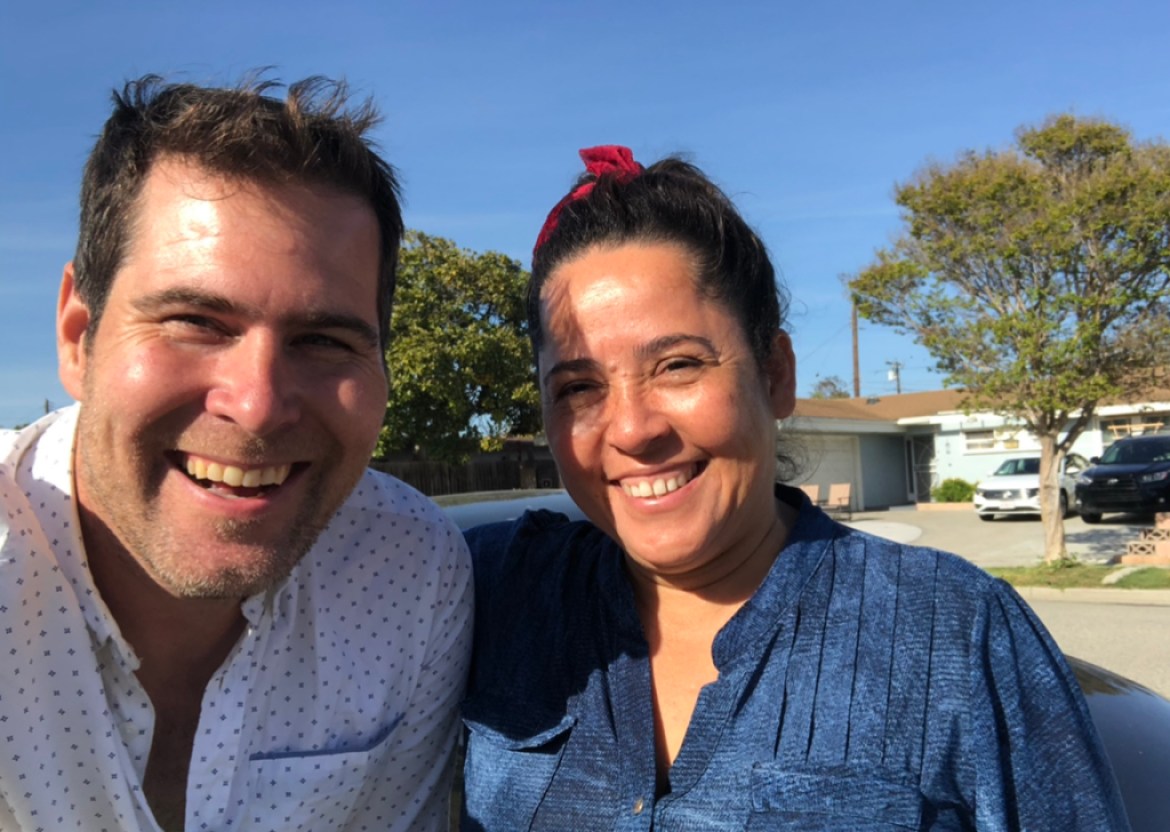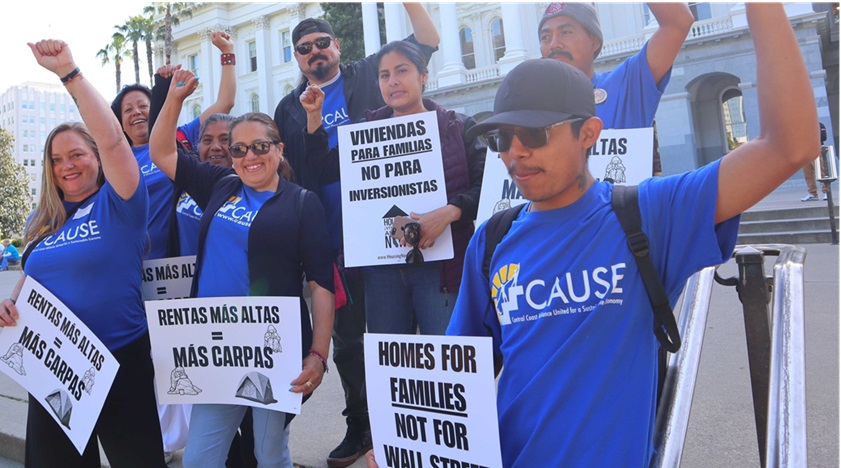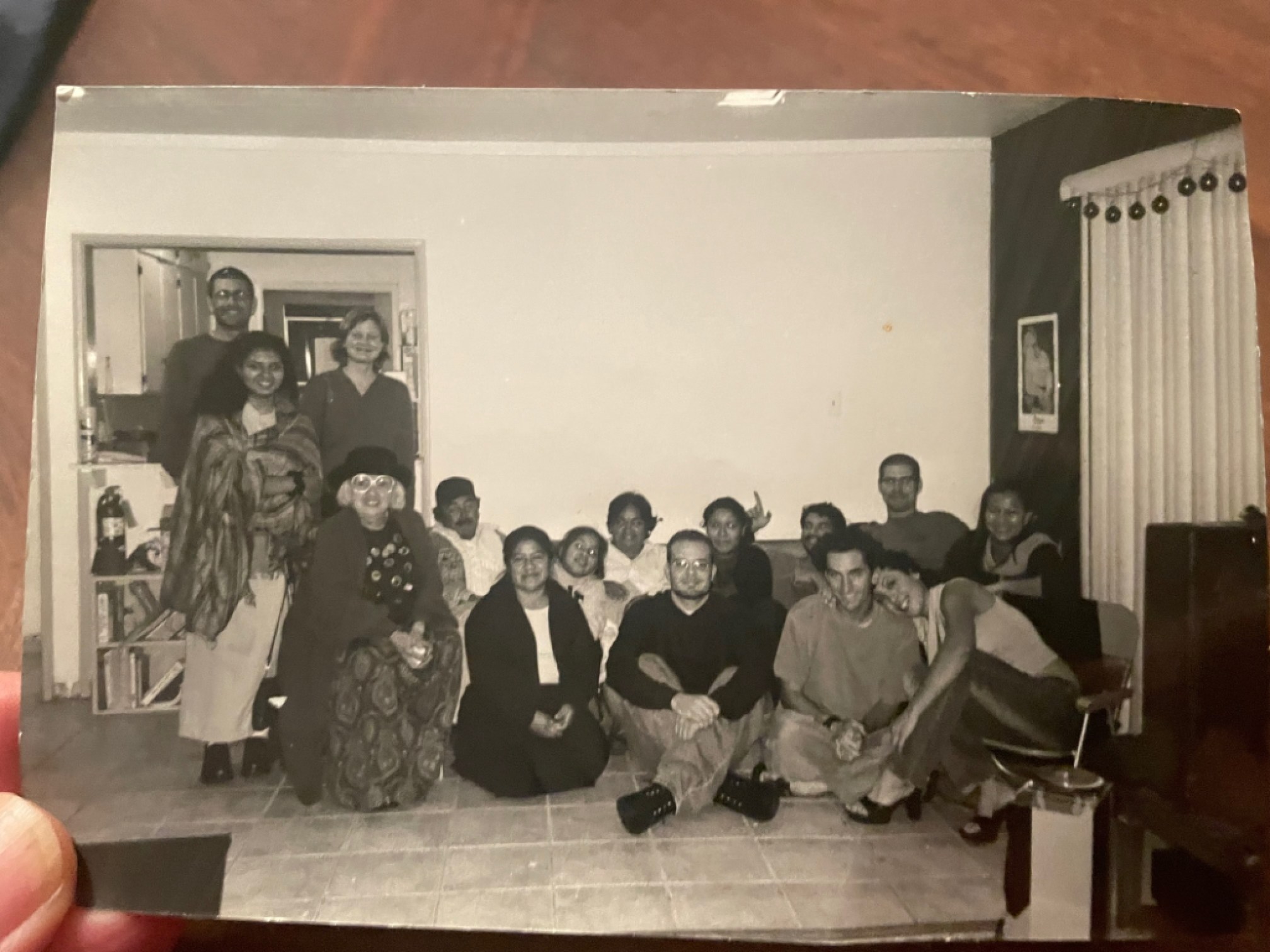Rent Control Wars in Isla Vista
Tenant Protections in Santa Barbara County Are Long Overdue

As it’s currently modernizing its eviction protections, the City of Santa Barbara is following several other Central Coast cities in considering rent control — a long-overdue and broadly popular, common-sense cap on runaway rents. Tenant political power has been growing steadily around the country for the last 20 years, with a resurgence of energy since the start of the COVID pandemic. The current Santa Barbara tenants who are organizing have some roots in the Isla Vista Tenants Union, which started organizing 25 years ago.
In the fall of 1998, I was eating lunch outside of class at UC Santa Barbara when I was approached by a pregnant woman with a flier.
“Hi, I’m Marisol,” she said. “I’m eight months pregnant, and I just got a 30-day eviction notice from my landlord. There are 36 other families also getting evicted just a couple blocks away, in Isla Vista. We don’t want to be homeless with our families, so we are fighting back. Can you join us?”
A few hours later, I arrived at a noisy rally on El Colegio Road. Families with young children marched back and forth on the narrow sidewalk. Loud drums kept a steady rhythm, and chants of “Sí se puede!” filled the air.

The strength of the women leading the charge was inspiring. Marisol had recruited me and many other students, knowing that the more students on their side, the better.
The landlords did not expect our resistance, and they resorted to nasty tactics, including turning on the sprinkler system to drench us during the rally. Building managers screamed racist insults at the families, and one threw beer on us from the balcony. But these taunts only strengthened our determination.
Meanwhile, Ron Perry, a Legal Aid lawyer, was scrambling to develop a legal strategy at a time where there were virtually no laws to protect tenants from evictions.
Despite our protests, we lost, and everyone was evicted. After the eviction, we gathered once more for what we thought was our final meeting.
“Is this it? Do we all go our separate ways, or do we want to keep fighting and try to make sure that this does not happen again?” someone asked.
One by one, recently evicted families and students committed to each other to keep fighting. We started the Isla Vista Tenants Union.
Our early meetings were six-hour community-building events. Every Friday, we would meet at 4 p.m. on a soccer field to play soccer with all the kids. At 6 p.m., we held our bilingual meeting and planned how we were going to fight evictions, push for new tenants’ rights laws, and educate the community on their rights. After the meeting, we would head over to the student housing co-op for a community potluck, and often dancing. We built trust and a feeling of community that kept us coming back week after week.
Our main goal was to stop evictions in Isla Vista. We heard that some communities were trying to halt evictions by proposing Just Cause Eviction ordinances. Without knowing anything about the politics of the county or the difficulty of forcing government action, we started demanding a Just Cause Ordinance from Santa Barbara County.
When we succeeded in getting the Just Cause Ordinance on the agenda, the Isla Vista landlords completely flipped out. We were shocked at how organized the land- lords were and also how the worst Isla Vista landlords were able to effectively mobilize landlords countywide.
At the hearing, Marisol and others talked about the pain of being evicted without reason, and how eviction had upended their lives and community. Meanwhile, the landlords, often shaking with rage, yelled into the microphone asserting that the Just Cause Ordinance was rent control, communism, and was the beginning of the end of western civilization. They openly threatened the Board of Supervisors with political retributions if they even lifted a finger in favor of tenants’ rights.
At first, we were confused why the Isla Vista landlords were so terrified of us, an inexperienced group of students and families with no political power. But their fierce resistance over something so basic as protections from mass evictions helped us realize the potential power we did have.
Isla Vista was a community of about 20,000 people, 98 percent of whom were tenants. What the landlords were really terrified of was tenants getting organized, flexing our muscles, and making demands on the government.
Even more, since Isla Vista was unincorporated, they were scared of a community of 98 percent tenants becoming its own city. The landlords’ fears confirmed to us we were on the right track, and we got more organized. We protested evictions wherever they happened, and we knocked on more doors to involve tenants.

In later years, many of us started spreading our wings outside of Isla Vista. We helped start the Santa Barbara living wage campaign, which would become PUEBLO (People United for Economic Justice Building Leadership Through Organizing), later merging with CAUSE (Central Coast Alliance United for a Sustainable Economy). The group effectively organizes and mobilizes tenants today. CAUSE just helped make Oxnard the sixth-largest California city to pass rent control. We got some training from legendary organizer Dolores Huerta, who came to Santa Barbara several years in a row to teach us how toorganize tenants and workers on a larger scale.
PUEBLO’s Isla Vista chapter continued to fight evictions. Marisol moved to Carpinteria, and as part of PUEBLO’s Carpinteria chapter, she led a successful fight to stop the closure of her kids’ school by mobilizing more than 200 parents to school board meetings. We also stopped a planned mass eviction in Santa Maria at a mobile home park.
Now, 25 years later, there is a Just Cause Ordinance — one tenants are currently fighting to strengthen — a statewide rent cap, and Santa Barbara may soon have rent control. Life is certainly not easy for tenants in the county, but the tenants’ movement has gained strength throughout the country. Tangible victories have kept millions of families from becoming homeless. The mass evictions in Isla Vista in 1998 also sparked a fire in many of us that turned us into long-term tenant, worker, and community organizers.
Twenty-five years after the mass evictions, organizations like CAUSE are continuing the tradition of struggle for tenants in Santa Barbara. I’m hopeful that Santa Barbara will soon join many other cities to pass rent control.
Harley Augustino has been a tenant and labor union organizer for 25 years; was a former community organizer in Isla Vista and Santa Barbara, 1998-2007; and is the current executive director of Base Building for Power, which trains community organizers in the U.S. and Canada.

Premier Events
Sun, Dec 22
11:00 AM
Santa Barbara
Mosaic Makers Market – Holiday Market Finale
Wed, Dec 25
6:00 PM
Santa Barbara
FREE Contra Dance X-mas Day💃Corwin & Grace band6-9
Sun, Dec 22
11:00 AM
Santa Barbara
Mosaic Makers Market – Holiday Market Finale
Sun, Dec 22
2:00 PM
Santa Barbara
Santa Paws Holiday Party – A Howliday Celebration
Tue, Dec 24
2:00 PM
Santa Barbara
Brass Bear Christmas Eve Buffet
Tue, Dec 24
5:00 PM
Santa Barbara
Christmas Eve at the USSB
Wed, Dec 25
5:30 PM
Santa Barbara
Christmas Dinner at El Encanto
Fri, Dec 27
6:00 PM
Solvang
New Year Disco Ball Paint & Sip
Fri, Dec 27
9:00 PM
Santa Barbara
Film Screening: “Indiana Jones and The Last Crusade”
Sat, Dec 28
7:00 PM
Lompoc
Rosie Flores & Grey DeLisle + Special Guests LIVE
Sat, Dec 28
7:00 PM
Carpinteria
Family Comedy Night at The Alcazar
Sat, Dec 28
7:00 PM
Santa Barbara
The Temptations at Casa De La Raza
Sun, Dec 22 11:00 AM
Santa Barbara
Mosaic Makers Market – Holiday Market Finale
Wed, Dec 25 6:00 PM
Santa Barbara
FREE Contra Dance X-mas Day💃Corwin & Grace band6-9
Sun, Dec 22 11:00 AM
Santa Barbara
Mosaic Makers Market – Holiday Market Finale
Sun, Dec 22 2:00 PM
Santa Barbara
Santa Paws Holiday Party – A Howliday Celebration
Tue, Dec 24 2:00 PM
Santa Barbara
Brass Bear Christmas Eve Buffet
Tue, Dec 24 5:00 PM
Santa Barbara
Christmas Eve at the USSB
Wed, Dec 25 5:30 PM
Santa Barbara
Christmas Dinner at El Encanto
Fri, Dec 27 6:00 PM
Solvang
New Year Disco Ball Paint & Sip
Fri, Dec 27 9:00 PM
Santa Barbara
Film Screening: “Indiana Jones and The Last Crusade”
Sat, Dec 28 7:00 PM
Lompoc
Rosie Flores & Grey DeLisle + Special Guests LIVE
Sat, Dec 28 7:00 PM
Carpinteria
Family Comedy Night at The Alcazar
Sat, Dec 28 7:00 PM
Santa Barbara

























You must be logged in to post a comment.